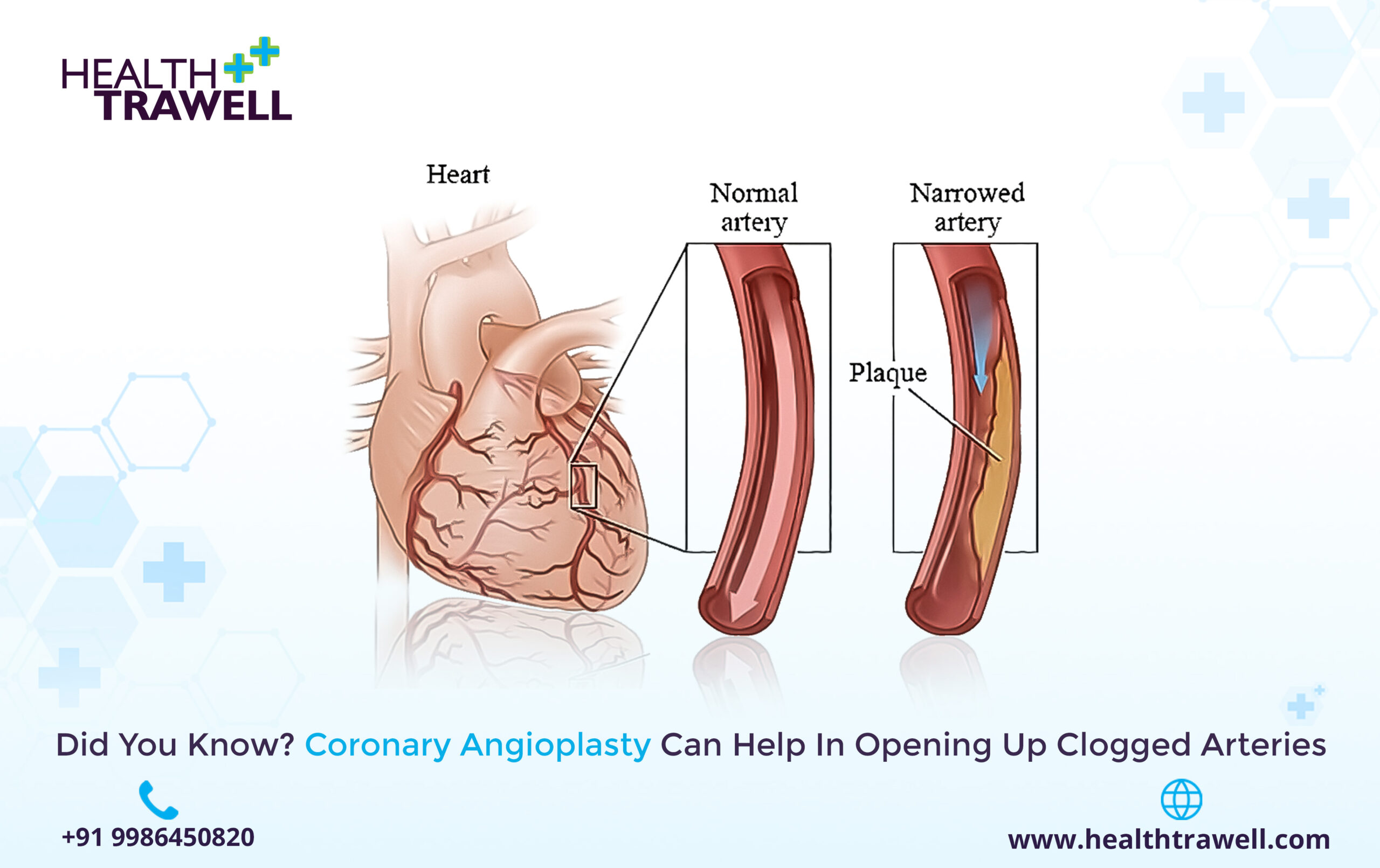Did You Know? Coronary Angioplasty Can Help in Opening Up Clogged Arteries

What Is Angioplasty?
Coronary angioplasty is a medical procedure that involves using a balloon catheter to open up blocked or narrowed coronary arteries. This allows for better blood flow to the heart muscle and can relieve symptoms of chest pain (angina) and reduce the risk of a heart attack.
Why Is Angioplasty Performed?
It is performed for several reasons, including:
- To relieve symptoms of chest pain (angina)
- To diminish any further risks of heart attacks
- To make blood flow better towards the heart muscles
- To treat a heart attack that is in progress.
What Risks Are Associated with Angioplasty?
All available medical procedures come with some or the kinds of risks; and same goes for angioplasty as well, which too carries some risks. These can include the ones given underneath:
- Bleeding/bruising over the site wherein the catheter had been inserted at the time of angioplasty.
- Blood clots forming inside the arteries.
- Heart attack chances
- Stroke
- Allergic reactions to the dye that had been utilised during angioplasty.
- Kidney damage due to the dye that had been utilised during angioplasty.
- Infection(s)
What to Expect before Angioplasty?
Before the coronary angioplasty procedure, you will be given instructions on how to prepare. This may include fasting for a certain period of time before the procedure and stopping certain medications. You may also undergo various tests, such as blood tests and an electrocardiogram (ECG).
What to Expect during Angioplasty?
During the procedure, you will be given a local anaesthetic and a mild sedative to help you relax. A small incision will be made in your groin or arm, and a thin, flexible tube called a catheter will be inserted through the incision and guided through your blood vessels to your heart. A special dye will be injected through the catheter, which will allow the doctor to see any blockages or narrowing in your coronary arteries. A balloon catheter will then be inserted through the same incision and guided to the blocked or narrowed artery. The balloon will be inflated, which will push the plague against the walls of the artery and open up the blockage. In some cases, a stent (a small mesh tube) may be placed in the artery to keep it open.
What to Expect after Angioplasty?
After the procedure, you will be monitored in a recovery room for a few hours to make sure there are no complications. You may be asked to lie still and keep your leg straight for several hours to prevent bleeding at the catheter site. You might even be prescribed medications for the prevention of any blood clots from developing. Health is the biggest wealth, so it is advised if you take special care of your health, with more focus on your heart-health after the procedure and visit the practitioners regularly to minimise any chances of developing any intricacies further.
How to Keep Your Heart Healthy after Angioplasty?
To keep your heart healthy after a coronary angioplasty, you should follow your doctor’s instructions for lifestyle changes. This may include:
- Eating a heart-healthy diet
- Quitting smoking
- Getting regular exercise
- Managing stress
- Taking medications as prescribed
- Going to follow-up appointments with your doctor to monitor your progress.
You can associate with Health Trawell for getting the best hands to undertake the job of angioplasty for you!


